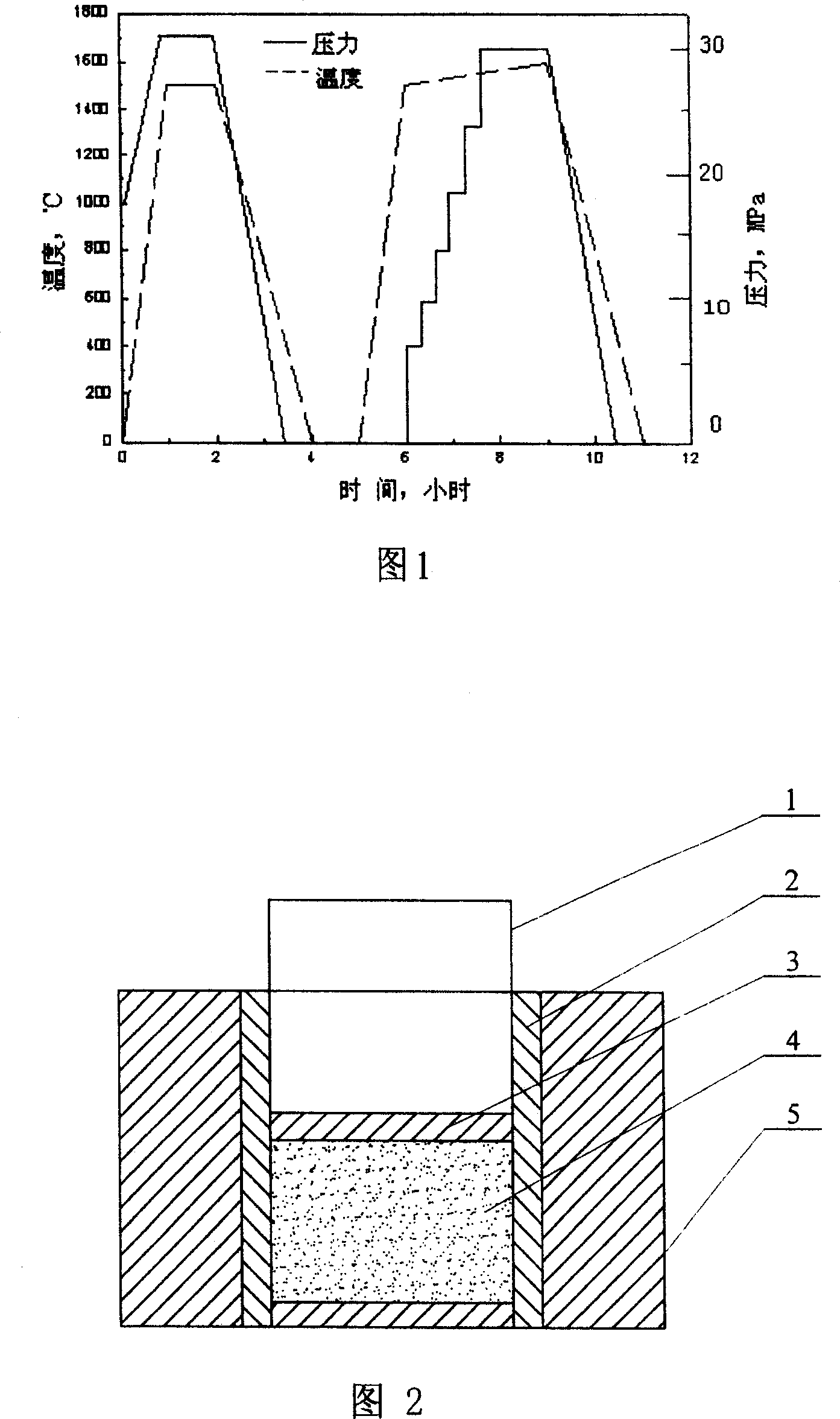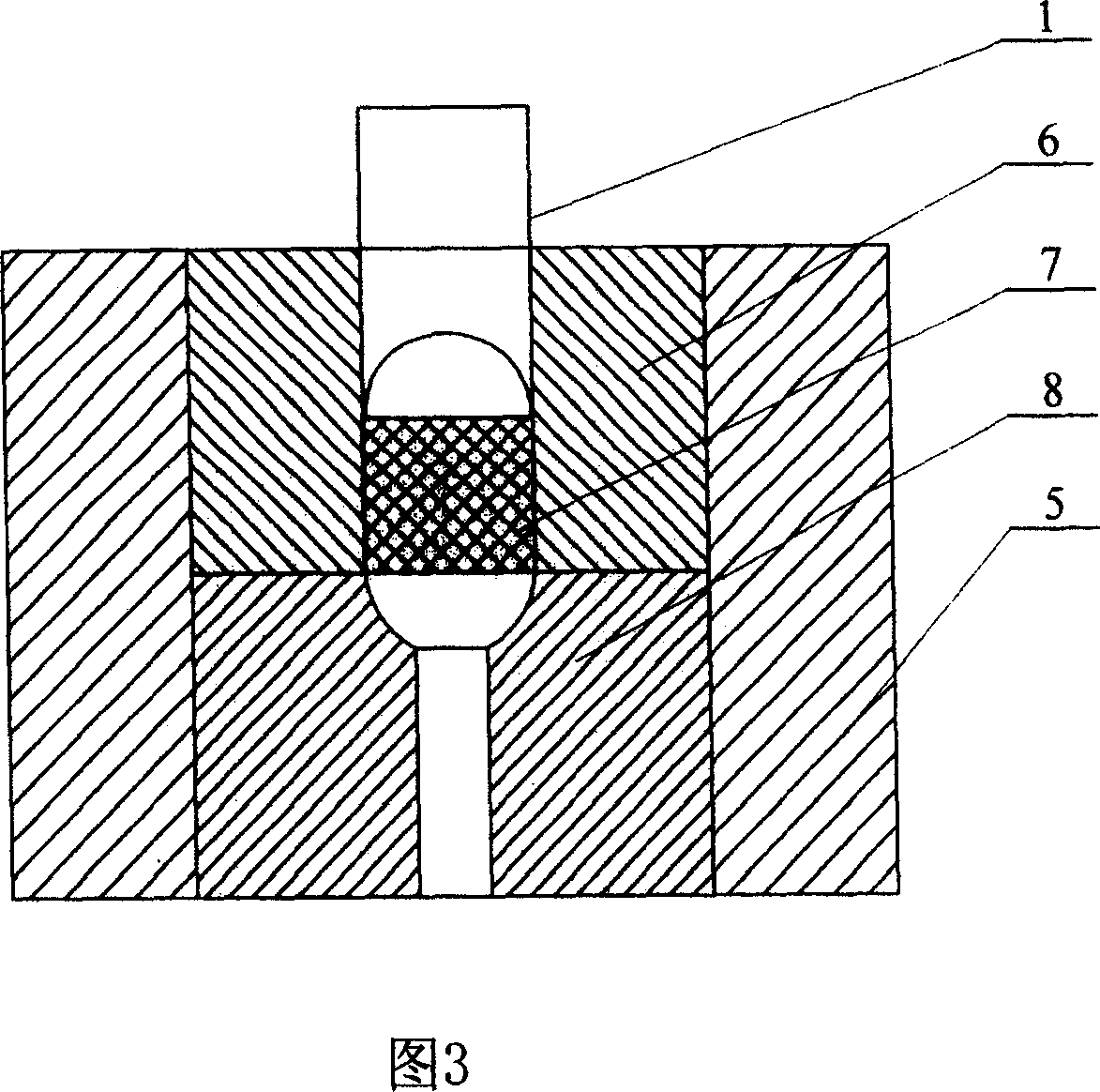Shaping method of nanometer bioceramic artificial joint
A technology of bioceramics and artificial joints, applied in medical science, prosthesis and other directions, can solve the problems of difficult preparation and processing of complex-shaped ceramic parts, and achieve the effect of shortening the processing cycle, simple forming process and small processing allowance.
- Summary
- Abstract
- Description
- Claims
- Application Information
AI Technical Summary
Problems solved by technology
Method used
Image
Examples
specific Embodiment approach 1
[0018] Specific implementation mode 1: In this implementation mode, the preparation and forming process of nano-biological ceramic materials are completed according to the following steps:
[0019] 1. Preparation of Al by alcohol-water solution heating method 2 o 3 , ZrO 2 Nano powder. When the alcohol-water solution is heated, a gel-like precipitate is produced in the solution, and the following hydrolysis reaction occurs:
[0020] 4ZrOCl 2 +6H 2 O→Zr 4 o 2 (OH) 8 Cl 4 +4HCl(1),
[0021] Al 3+ +3H 2 O→Al(OH) 3 +3H + (2).
[0022] Al(NO 3 ) 3 9H 2 O, ZrOCl 2 ·8H 2 O and Y (NO 3 ) 3 ·6H 2 O is formulated into a mixed solution with a certain molar concentration by molar ratio, adding absolute ethanol at a ratio of alcohol to water of 5:1, and adding a certain amount of polyethylene glycol 200 and polyethylene glycol 1540 as a dispersant. The solution was placed in a constant temperature water bath and slowly heated to 75°C, and kept at this temperature for...
specific Embodiment approach 2
[0030] Specific implementation mode two: this implementation mode completes the preparation and forming process of nano-biological ceramic materials according to the following steps:
[0031] 1. Prepare hydroxyapatite HAP powder by chemical precipitation method.
[0032] The chemical reaction equation of hydroxyapatite is as follows:
[0033] (NH 4 ) 2 HPO 4 +NH 3 ·H 2 O→(NH 4 ) 3 PO 4 +H 2 O(3),
[0034] 3(NH 4 ) 3PO 4 +NH 3 ·H 2 O→(NH 4 ) 10 (PO 4 ) 3 OH(4),
[0035] 2(NH 4 ) 10 (PO 4 ) 3 OH+10Ca(NO 3 ) 2 → Ca 10 (PO 4 ) 6 (OH 2 +20NH 4 NO 3 (5).
[0036] The overall equation is:
[0037] 10Ca(NO 3 ) 2 4H 2 O+6(NH 4 ) 2 HPO 4 +8NH 3 ·H 2 O→Ca 10 (PO 4 ) 6 (OH) 2 +20NH 4 NO 3 +6H 2 O(6).
[0038] Prepare a certain concentration of (NH 4 ) 2 HPO 4 solution and Ca(NO 3 ) 2 solution. where Ca(NO 3 ) 2 4H 2 O prepared with absolute ethanol, (NH 4 ) 2 HPO 4 Prepare with deionized water. According to formula (6), the two...
specific Embodiment approach 3
[0046] Embodiment 3: This embodiment is different from Embodiment 1 and Embodiment 2 in that, according to the different ratios of materials, the composition ratio of nano-biological ceramics is shown in Table 3.
[0047] Table 3 The composition ratio (%) of nano bioceramics forming artificial joint
[0048] Al 2 o 3
[0049] Note: Al 2 o 3 : ZrO 2 is the mole fraction ratio; ZrO 2 : HAP is the mass fraction ratio.
PUM
| Property | Measurement | Unit |
|---|---|---|
| particle size | aaaaa | aaaaa |
| particle size | aaaaa | aaaaa |
| particle diameter | aaaaa | aaaaa |
Abstract
Description
Claims
Application Information
 Login to View More
Login to View More - R&D
- Intellectual Property
- Life Sciences
- Materials
- Tech Scout
- Unparalleled Data Quality
- Higher Quality Content
- 60% Fewer Hallucinations
Browse by: Latest US Patents, China's latest patents, Technical Efficacy Thesaurus, Application Domain, Technology Topic, Popular Technical Reports.
© 2025 PatSnap. All rights reserved.Legal|Privacy policy|Modern Slavery Act Transparency Statement|Sitemap|About US| Contact US: help@patsnap.com


